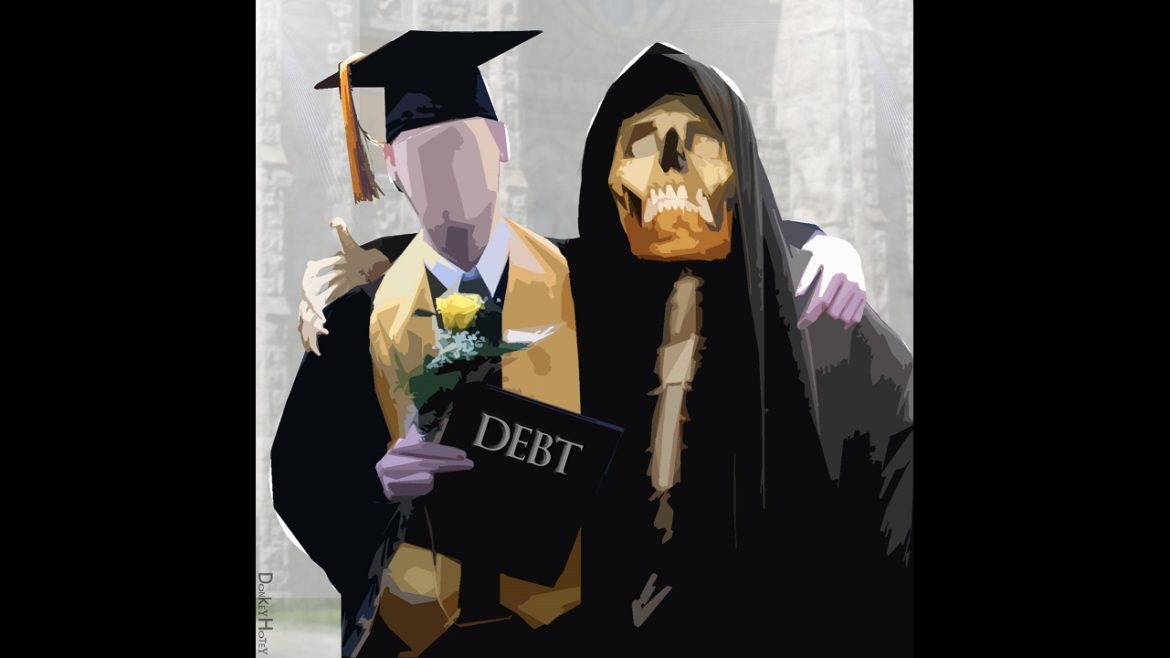Gold has all the potential to go unprecedentedly high. But silver will be gold on
Site:
Precious metals news
Mike has discovered a critical indicator during his in-depth research.
Oct 12, 2023 - 06:19:48 PDT
An upsurge in labor protests is marked by widespread strikes across various major industries. A common thread marks most: protests originate in blue-collar jobs, where wages historically lag behind productivity and corporate profits. Labor unrest in the U.S. reached a peak this year, with 453,000 workers engaging in 312 strikes, the most since 2019. Rising inflation, social disparity, and increasing living costs highlight deepening societal fractures, threatening the foundation of the U.S. economy.
Social Security benefits will rise by a mere 3.2% in 2024, a significantly smaller increase compared to the previous year's 8.7% due to easing inflation. Despite the increase, concerns persist about the program's financial stability. Reports indicate that by 2033, the Social Security trust fund will only be able to pay 77% of scheduled benefits. Efforts to bolster the program have stalled, leaving beneficiaries uncertain about future adjustments and the program's long-term viability.
Higher interest rates have hurt bank deposits, and the outlook remains bleak. Investors brace for disappointing bank earnings tied to deposit costs. Despite rate hikes, banks may face further increases, especially if the Federal Reserve sustains elevated rates. A notable gap between deposit costs and federal-funds rate, along with a shift towards interest-paying accounts, exacerbates banks' challenges. Historical comparisons highlight worsening conditions.
September's inflation rate outpaced expectations, with a 3.7% annual increase. Core inflation matched forecasts. Rising shelter and energy costs were primary contributors. Real hourly earnings decreased due to inflation. The Federal Reserve remains divided on addressing inflation concerns, while wholesale prices also rose, exceeding the Fed's target.
Oct 11, 2023 - 12:36:55 PDT
Amid growing global political and economic uncertainties, factors such as escalating public debt, geopolitical tensions, the "weaponization" of the US dollar, and waning US dollar credit pose significant challenges. Bolstering gold reserves serves as a strategic move to mitigate these risks, stabilize reserve assets, and fortify the financial system's resilience.
Gold and silver prices showed resilience on Wednesday, marking their fourth consecutive gain. Gold, particularly, rebounded impressively after a series of declines, with December delivery rising by $12 or 0.6%, closing at a near two-week high of $1,887.30 an ounce.
Paper money allows governments to print without needing taxes, reducing reliance on citizens. The Song Dynasty's overprinting led to hyperinflation and collapse. Today's global economies show similar risks with increasing inflation. The proposed solution is tangible asset-backed currencies like gold or Bitcoin, aligning government and citizen interests for stability and prosperity.
David Webb's book, "The Great Taking," claims there's a 50-year plot by central bankers to confiscate assets, including securities and debt-financed properties. With the decline of paper share certificates, most assets are only seemingly owned, making them vulnerable in a crisis. He warns of a designed financial crash that will enable this asset seizure. Webb advises being debt-free and holding tangible assets, especially physical gold or silver, to protect oneself.
 Fed To "Proceed Carefully": FOMC Minutes Echo 'Hawkish Tone' From Meeting
Fed To "Proceed Carefully": FOMC Minutes Echo 'Hawkish Tone' From MeetingOct 11, 2023 - 12:06:32 PDT
The Federal Reserve's recent Minutes indicated a hawkish stance with a probable rate increase. However, Bloomberg Intelligence suggests a more neutral position. Since the hawkish announcement, the dollar has strengthened, and bonds have dropped in price. The minutes suggest a balanced view on upcoming policy decisions, leaning towards a pause in the November meeting unless significant CPI data changes arise.
Oct 11, 2023 - 09:37:42 PDT
Central banks globally are buying gold in record amounts to diversify from the dollar. State Street Global Advisors reports that these purchases reached 387 metric tons in the first half of 2023 alone, after an unprecedented 1,083 tons the prior year. This shift is partly attributed to the de-dollarization movement, led by nations like China and Russia, aiming to lessen the dollar's dominance in global trade. This move is also a response to the U.S. using the dollar's supremacy to enforce economic sanctions. The trend is anticipated to persist due to ongoing economic and geopolitical risks.
Oct 11, 2023 - 07:52:29 PDT
Billionaire Ray Dalio sounded the alarm in a Fox Business interview, asserting that the Federal Reserve's stubborn stance on maintaining high interest rates is pushing them into a precarious financial situation. Highlighting the global trend, he pointed out that central banks are hemorrhaging money. Dalio ominously predicts that the U.S. Federal Reserve, in a desperate move, will be forced to print money to counterbalance these significant losses.
House prices are set to plummet for the first time in a decade, claims a former Oppenheimer analyst who was dubbed the 'Oracle of Wall Street.' Meredith Whitney, known for her Wall Street predictions, anticipates a decline in U.S. house prices for the first time in a decade. The ageing Baby Boomer population downsizing and current high mortgage rates contribute to this trend. Recent data shows an uptick in reduced home listing prices, hinting at a market shift.
 Housing Industry Pressures Powell to Stop Raising Interest Rates to Avoid a Hard Landing
Housing Industry Pressures Powell to Stop Raising Interest Rates to Avoid a Hard LandingOct 11, 2023 - 07:19:16 PDT
Real estate and banking authorities have issued a stern warning to the Federal Reserve, urgently pressing them to cease interest rate increases amidst skyrocketing housing prices and a severe lack of available homes. Their letter to the Fed and Chair Jerome Powell paints a dire picture of the housing market, emphasizing the detrimental consequences of the current monetary policy.
Janet Yellen, via a recent statement to the press, implies that interest rates will be much lower than current levels for the next 10 years. She is treading carefully amidst rising interest expenses. Though the Fed is combating inflation, the critical need for lower rates is clear. A CBO graph by Bianco Research shows interest costs could overwhelm tax revenues, suggesting that without maintaining lower interest rates, the nation faces potential bankruptcy.
High interest rates are causing concern among World Bank officials due to potential impacts on nations with large debts. The World Bank predicts prolonged elevated borrowing costs leading to slowed global growth. Past situations with high rates resulted in many economies going bankrupt, suggesting similar challenges may arise for heavily indebted countries.
 Former Walmart U.S. CEO Bill Simon Warns: Consumers Starting to Buckle for First Time in a Decade
Former Walmart U.S. CEO Bill Simon Warns: Consumers Starting to Buckle for First Time in a DecadeOct 11, 2023 - 06:29:05 PDT
Former Walmart U.S. CEO, Bill Simon, warns that consumers are facing challenges not seen in a decade, due to factors like inflation, higher interest rates, budget issues, polarized politics, student loan debts, and escalating tensions in Israel. These pressures are causing consumer caution, leading to a potential slowdown in spending.
The US is flagged as one of the worst performers among major economies, with its debt trends alarming. Government debt is predicted to approach 100% of global GDP by decade's end. The US deficit is set to exceed 8% of GDP this year and hover around 7% in five years. The surge in the 2022-2023 deficit is attributed to a sharp revenue drop. After recent political disputes in Washington, the IMF emphasizes the need to adjust policy ambitions or tax approaches to ensure financial stability.
 Wholesale Inflation Continue to Rise at 0.5% In September, Much More Than Expected
Wholesale Inflation Continue to Rise at 0.5% In September, Much More Than ExpectedOct 11, 2023 - 06:07:08 PDT
Wholesale prices in September surged more than anticipated, underscoring escalating inflationary pressures in the U.S. economy. The producer price index shot up by 0.5%, significantly surpassing the predicted 0.3%, according to the Labor Department. This inflationary trend was predominantly fueled by goods prices, notably with gasoline prices skyrocketing by 5.4%. Despite the Federal Reserve's aggressive interest rate hikes to curb inflation, these mounting pressures show no sign of abating.
 Resumption of Student Loan Repayments Stressing Already Stressed American Consumers
Resumption of Student Loan Repayments Stressing Already Stressed American ConsumersOctober 11, 2023
After a more than 3-year pause, government student loan repayments started again this month and it's already putting the squeeze on borrower's wallets. This is bad news for an economy already strained by massive levels of debt and rising interest rates.Interest accrual on student loans resumed on September 1 with the first payments coming due in October.








